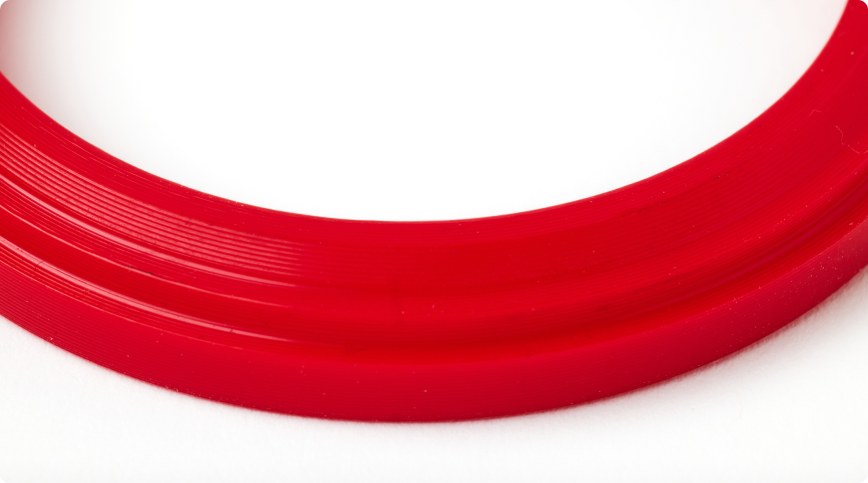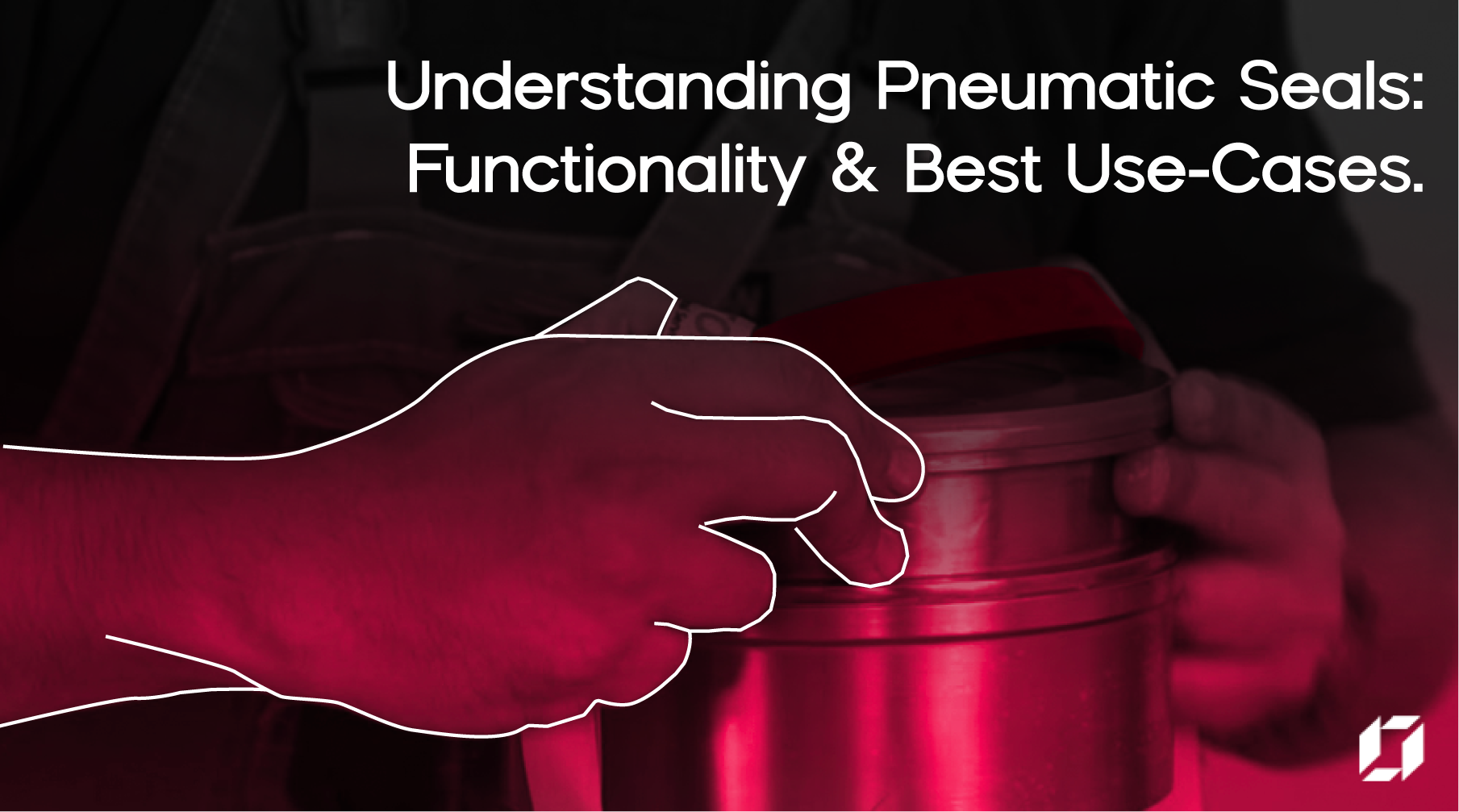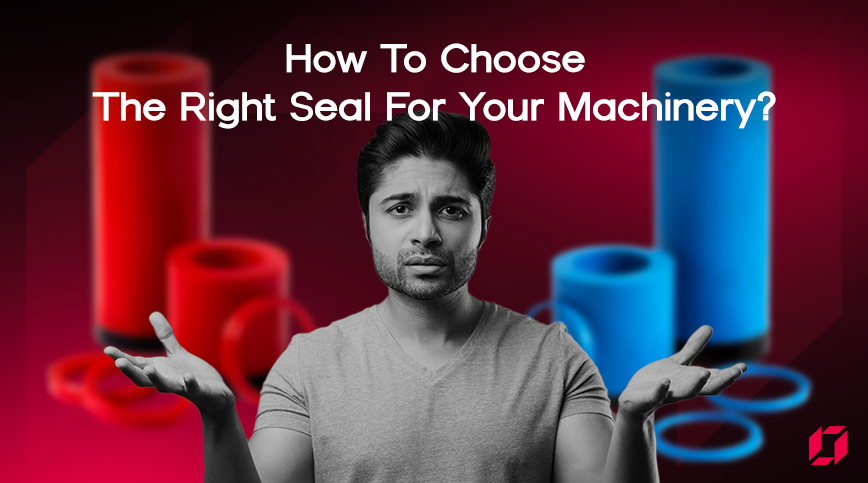
What Are Seals? A Comprehensive Guide to Their Importance and Applications
Seals are mechanical components used in heavy machinery to prevent leakage, damage, and contaminants from penetrating. Thus, they are vital in automotive engines, hydraulic systems, and other industrial machinery.
Let’s dive deep into their types, materials, and applications across various industries.
Understanding Seals
Seals are used as a barrier to prevent leakage in heavy machinery. With their ability to sustain high pressure, they enhance the longevity of mechanical systems. They are used in both static and dynamic applications, depending on the mobility of the surfaces.
Functions of Seals
- Leak Prevention: Seals prevent leakage of fluids such as oil, water, or gas from a system.
- Contaminant Exclusion: They block dirt, dust, and moisture from entering sensitive mechanical parts.
- Pressure Retention: Seals help maintain the required pressure within a system.
- Friction Reduction: They reduce wear and tear by minimizing friction between moving parts.
- Temperature and Chemical Resistance: Some seals are designed to withstand extreme temperatures and aggressive chemicals.
Types of Seals
Materials, designs, and applications of seals vary depending upon the functions of the systems. Here are some common types.
O-Rings
O-Rings are mechanical seals shaped like a simple circular loop (resembling the letter “O”). They are made from elastomeric materials like rubber, silicone, or other polymers. For specific applications, they can also be made from metals or thermoplastics. O-Rings are widely used to prevent leakage of liquids or gases in a system by creating a tight seal between two surfaces.
Key Characteristics Of O-Rings
- Shape: Circular cross-section and looped design.
- Material: Commonly made from materials such as Nitrile (NBR), Silicone, EPDM, FKM (Viton), or PTFE (Teflon), depending on the application requirements.
- Versatility: They can be used in both static and dynamic applications.
- Size: Available in various sizes to fit different types of grooves or housings.
Applications Of O-Rings
- Automotive Industry: Used in fuel injectors and engines.
- Aerospace: Found in landing gear and valves.
- Industrial Machinery: Commonly used in pumps and compressors.
- Consumer Products: Integrated into faucets and appliances.
V-Ring Seals
V-Ring Seals (commonly referred to as V-rings) are unique elastomeric sealing devices designed to prevent the ingress of contaminants like dirt, dust, water, or other particles into rotating shafts and bearings. They also retain lubricants within a system, enhancing its operational efficiency. V-Rings are highly reliable for protecting rotating equipment, extending the life of bearings, and minimizing the need for maintenance.
Key Characteristics Of V-Rings
- Shape: A flexible “V” or conical lip that acts as the sealing edge, with a broader back face that provides stability on the shaft.
- Material: Typically made from elastomeric materials like polyurethane, Nitrile Butadiene Rubber (NBR), EPDM, or FKM (Viton), chosen based on operating conditions.
- Contact Type: The V-Ring fits onto the shaft, rotating alongside it while the sealing lip remains in contact with a counter-face or housing surface.
- Versatility: Can accommodate axial misalignment, shaft eccentricity, and dynamic movement.
- Protection: Acts as a barrier to contaminants while retaining lubrication within the system.
- Easy Installation: Slides onto the shaft without the need for additional fasteners.
- Low Friction: Minimal friction between the sealing lip and counter-face reduces wear and energy loss.
Applications of V-Ring Seals
- Automotive Industry: Protects bearings in engines, wheel hubs, and gearboxes.
- Industrial Machinery: Commonly used in pumps, electric motors, and conveyor systems.
- Agriculture and Construction: Shields components from harsh environments, such as those in tractors and heavy equipment.
- Aerospace: Used in systems requiring lightweight and efficient seals.
Piston Seals
Piston Seals, also known as Piston Rings or Dynamic Seals, are essential sealing components used in hydraulic and pneumatic cylinders. These seals create a seal between the piston and the cylinder bore, preventing pressurized fluid or gas leaks. Piston seals play a critical role in maintaining the efficiency and performance of the system by separating two pressure chambers within the cylinder.
Key Characteristics of Piston Seals
- Location: Positioned on the piston, which moves back and forth inside the cylinder.
- Purpose: Prevent fluid or air from passing across the piston, maintaining pressure on one side for effective operation.
- Material:
- Nitrile Rubber (NBR): Good for hydraulic oils and low to moderate-temperature applications.
- Polyurethane (PU): High wear resistance, excellent for high-pressure applications.
- PTFE (Teflon): Low friction, suitable for high-temperature and chemically aggressive environments.
- EPDM: Resistant to water, steam, and weathering.
- FKM (Viton): Handles high temperatures and aggressive chemicals.
Applications of Piston Seals
- Hydraulic Cylinders: Used in construction equipment, presses, and material-handling systems.
- Pneumatic Cylinders: Found in automation equipment, robotics, and actuators.
- Industrial Machinery: Heavy-duty systems requiring high-pressure sealing.
- Aerospace: Critical for landing gear and flight control systems.
Rod Seals
Rod Seals, also known as Shaft Seals, are critical components in hydraulic and pneumatic cylinders. They are designed to prevent pressurized fluid or gas from leaking as the piston rod moves in and out of the cylinder housing. Rod Seals also protect the system from external contaminants like dirt, dust, and moisture.
Rod Seals play a vital role in ensuring the efficiency, reliability, and longevity of hydraulic and pneumatic systems by maintaining the integrity of the sealing mechanism.
Key Characteristics of Rod Seals
- Location: Installed in the cylinder head, where the piston rod passes through.
- Purpose: Prevent internal fluid from leaking. Provide a barrier against contaminants entering the system.
- Material:
- Nitrile Rubber (NBR): Excellent for hydraulic oils and low-temperature environments.
- Polyurethane (PU): Highly wear-resistant and durable. Ideal for high-pressure systems.
- PTFE (Teflon): Suitable for high-temperature and chemically aggressive environments. Has low-friction properties.
- EPDM: Resistant to water, steam, and weathering.
- FKM (Viton): Ideal for high temperatures and exposure to aggressive chemicals.
Applications of Rod Seals
- Hydraulic Cylinders: Used in heavy equipment like excavators, loaders, and cranes.
- Pneumatic Cylinders: Common in automation systems, robotics, and machinery actuators.
- Industrial Machinery: Found in presses, injection molding machines, and material handling systems.
- Aerospace: Essential for landing gear and flight control systems.
Wiper Seals
Wiper Seals, also known as Scraper Seals, are sealing components used in hydraulic and pneumatic cylinders. They prevent external contaminants like dirt, dust, mud, or moisture from entering the cylinder when the piston rod retracts. They are installed in the cylinder head to ensure the longevity and performance of the system by maintaining a clean operating environment.
Key Characteristics of Wiper Seals
- Location: Positioned at the outer side of the cylinder head, where the piston rod enters and exits.
- Purpose: Remove contaminants from the piston rod before it retracts into the cylinder. Protect the internal seals and cylinder components from damage caused by dirt and debris.
- Material:
- Polyurethane (PU): Excellent abrasion resistance and durability, suitable for harsh environments.
- Nitrile Rubber (NBR): Good for general-purpose applications involving hydraulic oils.
- PTFE (Teflon): Has low friction and excellent chemical resistance for specialized applications.
- Silicone: Suitable for high-temperature environments but less wear-resistant.
Types of Wiper Seals
- Single-Lip Wiper Seals: Basic design with a single scraping lip. Ideal for moderate environments.
- Double-Lip Wiper Seals: Enhanced design with an additional sealing lip to improve contaminant removal and fluid retention.
- Metal-Reinforced Wipers: Include a metal insert for enhanced stability and durability in heavy-duty applications.
Applications of Wiper Seals
- Hydraulic Cylinders: Common in construction, mining, and agricultural equipment like excavators and loaders.
- Pneumatic Cylinders: Used in industrial automation systems and robotics.
- Mobile Machinery: Found in equipment exposed to harsh outdoor conditions, such as cranes and tractors.
- Aerospace and Marine: Used in landing gear systems and marine hydraulic systems to ensure protection against saltwater and debris.
Quad-Ring Seals
Quad-Ring Seals, also known as X-Rings, are sealing components with a four-lobed, symmetrical, cross-sectional design. They are primarily used in static and dynamic sealing applications, providing an alternative to traditional O-Rings. Their unique design minimizes friction and enhances sealing performance under various operating conditions.
Key Characteristics of Quad-Ring Seals
- Design: Unlike the round cross-section of an O-Ring, Quad-Ring Seals have a distinctive “X” or four-lobed shape. The design provides multiple sealing surfaces, reducing contact pressure and enhancing performance.
- Common Materials for Quad-Ring Seals
- Nitrile Rubber (NBR): Excellent resistance to oils and fuels, suitable for moderate temperatures.
- FKM (Viton): High resistance to heat, chemicals, and aggressive fluids.
- EPDM: Ideal for water, steam, and weather-resistant applications.
- Silicone: Handles extreme temperatures but may not be suitable for dynamic applications.
- Polyurethane (PU): Highly abrasion-resistant, ideal for high-pressure systems.
- Purpose: Seal gaps between two components to prevent fluid or gas leakage.
Applications of Quad-Ring Seals
- Hydraulic Systems: Used in pumps, valves, and hydraulic cylinders.
- Pneumatic Systems: Common in actuators and compressors.
- Rotary and Reciprocating Seals: Effective in applications with moving shafts or pistons.
- Automotive Industry: Found in power steering, fuel, and braking systems.
- Industrial Equipment: Used in machinery that operates under high pressure or dynamic conditions.
Back-Up Rings
Back-Up Rings are rigid or semi-rigid support components used in sealing systems to prevent the deformation of soft seals under high pressure. They are typically placed on one or both sides of a smooth seal in the groove, depending on the direction of the pressure. These rings do not seal themselves but act as a structural reinforcement to ensure longevity and efficiency.
Key Characteristics of Back-Up Rings
- Material:
- PTFE (Teflon): Excellent chemical resistance, low friction, and suitability for high-temperature environments.
- Nylon: High strength and wear resistance. Suitable for medium-pressure applications.
- Polyurethane: Superior abrasion resistance. Ideal for dynamic applications.
- POM (Polyoxymethylene): High stiffness and dimensional stability for long-term use.
- Design: Manufactured as solid rings, split rings, or spiral designs for easy installation.
- Solid Back-Up Rings: Continuous rings for use in open grooves. Provide firm support.
- Split Back-Up Rings: Split for easier installation in closed grooves or where disassembly is difficult.
- Spiral Back-Up Rings: Features a spiral cut, combining flexibility and support for easier installation.
- Location: Installed in the groove behind the primary seal (e.g., an O-Ring or Quad-Ring Seal). For dynamic applications, they are positioned on the low-pressure side of the seal to support it against deformation caused by pressure.
- Function: Prevents the extrusion of the seal material into the gap between the sealing surfaces (extrusion gap). Improves the durability and effectiveness of the sealing system.
Applications of Back-Up Rings
- Hydraulic Systems: Common in hydraulic cylinders, valves, and pumps in high-pressure conditions.
- Pneumatic Systems: Used in high-speed systems to protect seals from dynamic loads.
- Oil & Gas Industry: Found in high-pressure wellheads and drilling equipment.
- Aerospace & Automotive: Used in hydraulic actuators, as well as braking and fuel systems.
- Industrial Machinery: Found in presses, injection molding machines, and other heavy-duty equipment.
Choosing the Right Seal
Selecting the right seal depends on various factors, including:
- Operating Temperature: High or low temperatures require specific material properties.
- Pressure Levels: High-pressure applications may require reinforced seals.
- Chemical Compatibility: Seals must be wear-resistant when they come in contact with fluids.
- Speed and Motion: Dynamic seals should be designed based on the type of movement (rotary, reciprocating, etc).
- Environmental Conditions: Exposure to UV, ozone, or abrasive particles affects the performance.
Seals can significantly impact the performance of a system, from preventing leaks to withstanding high temperatures. It is a key component used in multiple industries to ensure the high performance of heavy machinery. The right type of seal could make all the difference in the efficiency of industrial systems.




